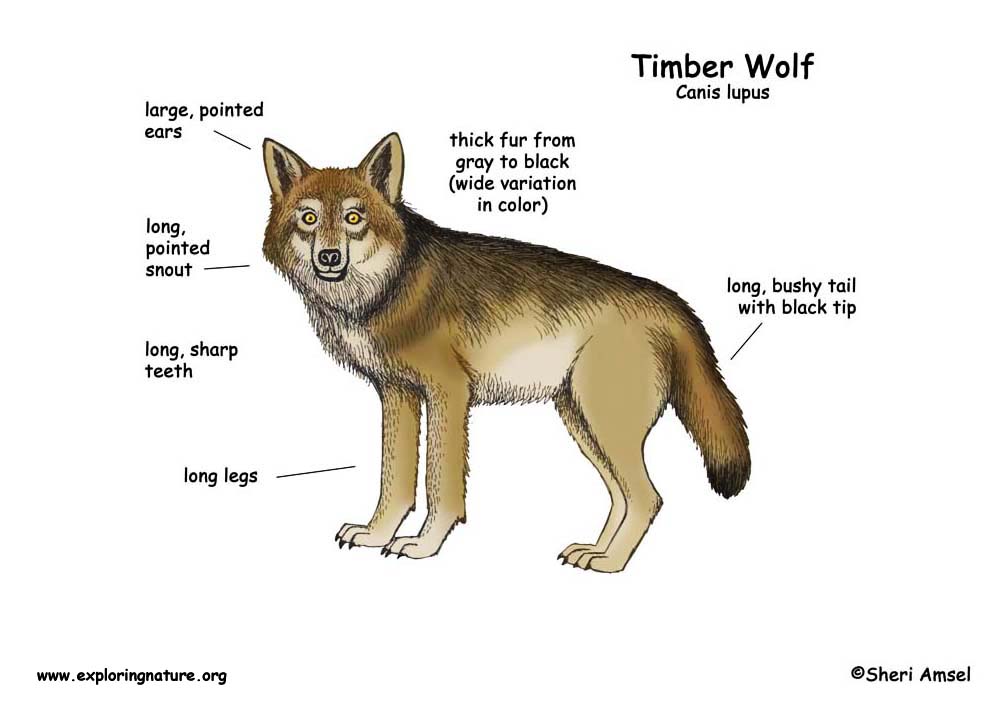

The timber wolf is found in Canada and Alaska and the northern United States in the Rocky Mountains, western Great Lakes, and the northeast.
Wolves are found on open prairies, in forests and mountainous regions.
Timber wolves are also called gray wolves, and are the largest wild members of the dog family. Males are bigger than females. They can grow to 5.5 feet (164cm) long, including the tail and weigh from 70 to over 100 pounds (45kg). Timber wolves vary in color from silvery-brown to yellowish-gray. They have white bellies and bushy tails.
Wolves are territorial and defend the area where they hunt and den. Wolves can run 25mph for a short distance when chasing prey. But usually they trot along at 5mph and can cover 10 - 30 miles looking for food. Wolves live in a pack, which is a family group. A family group is one pair of adults and their young, plus young from past years.
Most of their diet is made up of white-tailed deer (80%). They also eat beaver, moose, fish, muskrat and rabbits.
Their only real predator is man.
Only the lead female (alpha) in a pack breeds every year. The breeding female is pregnant for 9 weeks (gestation) and has about 6 pups in February in their underground den. By the fall they are large enough to hunt with the pack.
They can live up to 17 years in the wild. They are listed as vulnerable on the CITES List (International List) and endangered on the U.S. Federal Endangered Species List.
Kingdom: Animalia
Phylum: Chordata
Subphylum: Vertebrata
Class: Mammalia
Order: Carnivora
Suborder: Caniformia
Family: Canidae
Genus: Canis
Species: Canis lupus
When you research information you must cite the reference. Citing for websites is different from citing from books, magazines and periodicals. The style of citing shown here is from the MLA Style Citations (Modern Language Association).
When citing a WEBSITE the general format is as follows.
Author Last Name, First Name(s). "Title: Subtitle of Part of Web Page, if appropriate." Title: Subtitle: Section of Page if appropriate. Sponsoring/Publishing Agency, If Given. Additional significant descriptive information. Date of Electronic Publication or other Date, such as Last Updated. Day Month Year of access < URL >.
Amsel, Sheri. "Wolf (Timber Wolf or Gray Wolf)" Exploring Nature Educational Resource ©2005-2024. December 13, 2024
< http://mail.exploringnature.org/db/view/398 >

